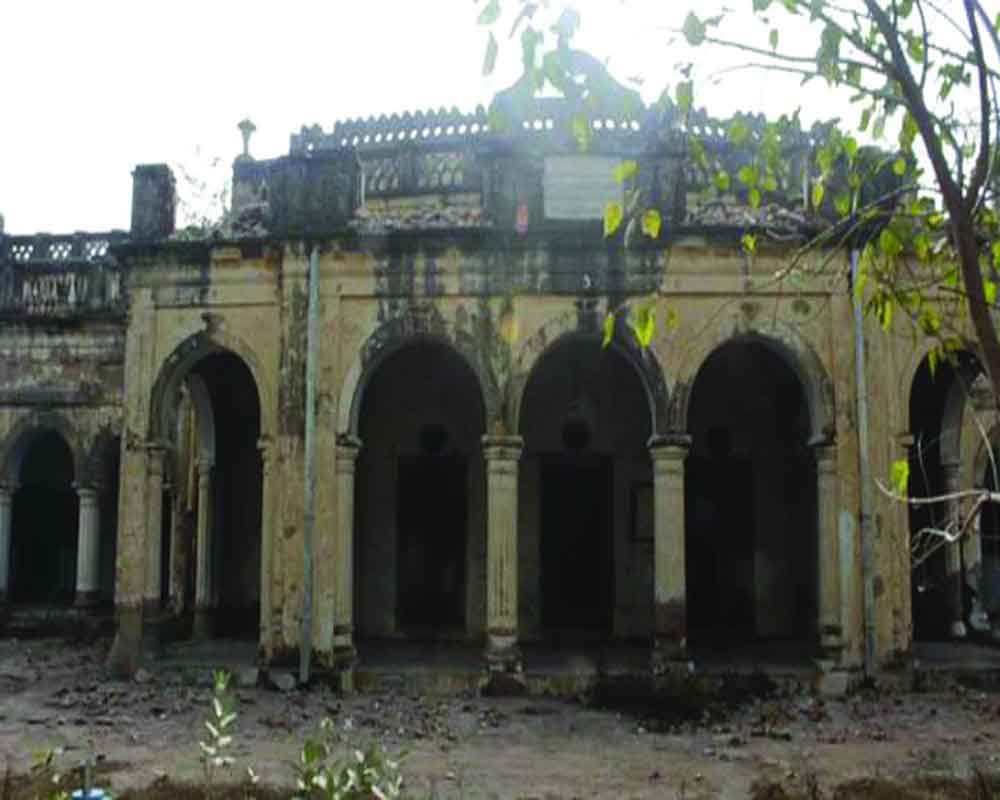Director Aditya Sangwan tells Ayushi Sharma that his documentary, Loharu Fort: The Great Story Never Told, was an attempt not just to restore the monument to its glory but also generate employment for the people of the area
Broken slabs of stone, blackened walls and cracked doors are clear indications that the Loharu Fort, which provided the canvas for tales of valour and heroism, has turned into a ruin.
Yet it was once rich, the seat of erudition with poet Mirza Ghalib placing up and down its library. Nestled at the edge of Rajasthan border, the golden soil of this township hides a regal history that needs to be told. If only to inspire locals out of their wasteland. Director Aditya Sangwan, who made an award-winning short documentary, titled Loharu Fort: The Great Story Never Told, says that people always forget about archaeological sites. The fort was built in the year 1570 CE by Thakur Arjun Singh. Rao Shekha had originally divided Shekhawati into 33 thikanas, of which Loharu Fort was 33rd. The fort spreads over 6.5 acres and combines Rajput, Mughal and Victorian influences in its architectural style.”
Two major battles fought over the fort. The first was in 1671 AD between Thakur Madan Singh and the Mughal governor of Hisar, over land revenue. The other was fought between the Thakur Kirat Singh and Raja Bhopal Singh of Khetri, who claimed Loharu as a part of Khetri. But that is not its only claim to fame. Poets like Mirza Ghalib and Dagh Dehlvi spent hours in its grand library, pouring over Urdu tomes. Umrao Begum, who married Ghalib when he was 13, was the daughter of the Nawab of Loharu, Ilahi Bakhsh Khan Maroof.
The fort was in the hands of later Nawabs of Loharu until 1971 when the Late Nawab Aminuddin Ahmed Khan sold it to the Government of Haryana. Since these buildings were uninhabited, the entire north-wing collapsed as did a part of the east-wing. Only the south-wing of the fort, containing the Farukh Manzil, survives, and that too in a very dilapidated state.
But the 23-year-old Sangwan has finally taken the initiative of protecting the monument by projecting it in his documentary. Being a local, he says, “I saw this fort every day on way to my school. But I couldn’t do much about its conservation and restoration then. But now, it’s time.” The documentary comprises interviews with representatives of Rampur Raza Library, which now holds some 3,000 books donated from the library of the fort, director of Ghalib Institute, which has artifacts and memorabilia from the poet’s association with the Nawab of the place, former ministers from UP, Rajasthan and Haryana, including former chief minister of Haryana, Bhupinder Singh Hooda and descendants of the last Nawab of Loharu, Aminuddin Ahmed Khan, who sold the humongous property to the state government in 1971.
He says, “It’s important to stress on the need of restoration of our legacy. It doesn’t matter which era it is, be it 21st cent or 10th. One should never forget their roots. As long as you are grounded, you will reach new heights. A nation’s culture resides in the hearts and soul of its people. As a youngster, I feel the responsibility of protecting my heritage. As they say one needs to protect the past in order to secure the future.”
It seems that he has a very positive approach when he says, “When you have made up your mind about anything, just like I did, you easily cross all the hurdles that come your way.”
The director tells us that his main focus while making the documentary was to generate employment for the locals. As he says, “Loharu is in the Bhiwani district of Haryana. It is a very backward area and I wanted to benefit the residents. The fort could easily be turned into a tourist spot just like many other archaeological sites. Or at least it could be developed into a library.” The mere thought about the development of the place indicates that Sangwan knows and accepts his responsibility as a youngster of the country.
“The fort is a real unexplored gem and there are many that are yet to be discovered,” says he. Ask him what next he has in store, he tells us in a quite enthusiastic voice as if he would just pop-out of the phone “My next target is Kangra Fort, 20 kilometres from the town of Dharamsala on the outskirts of the town of Kangra. The fort was built by the royal Rajput family of Kangra State (the Katoch dynasty), which traces its origins to the ancient Trigarta Kingdom, mentioned in the Mahabharata epic. It is the largest fort in the Himalayas and probably the oldest dated fort in India. I want to make a documentary on that. The perspective again is to restore the monument and generate employment for the locals.”


























